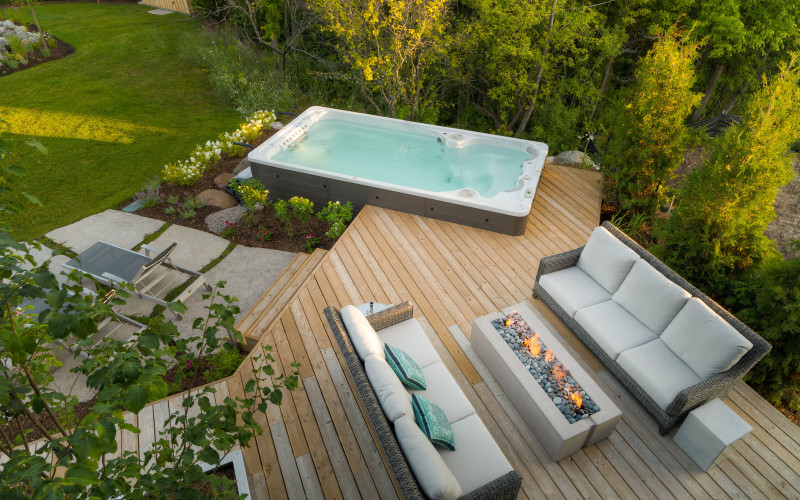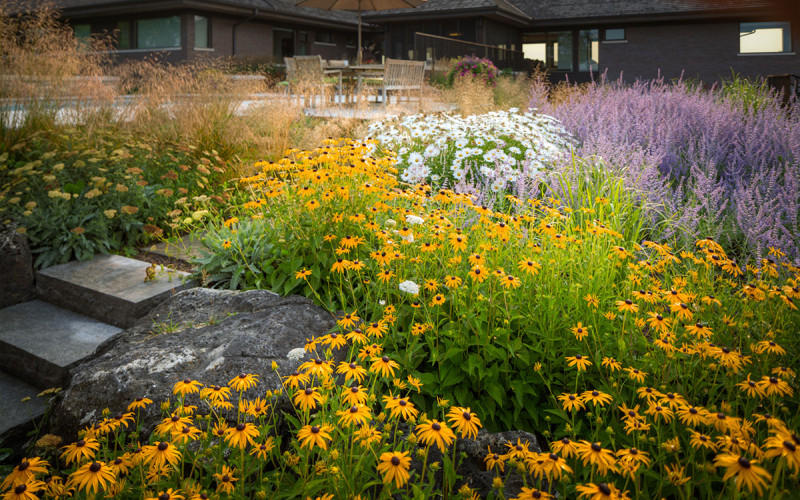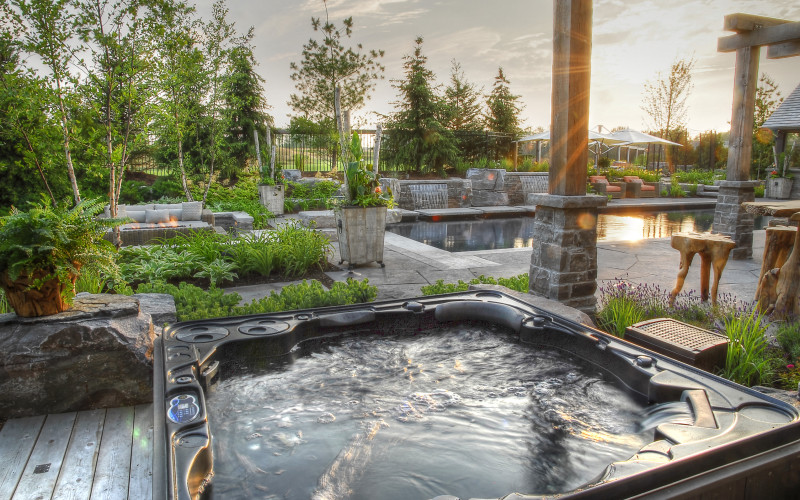Blog
The Best Plants for the Georgian Bay Area
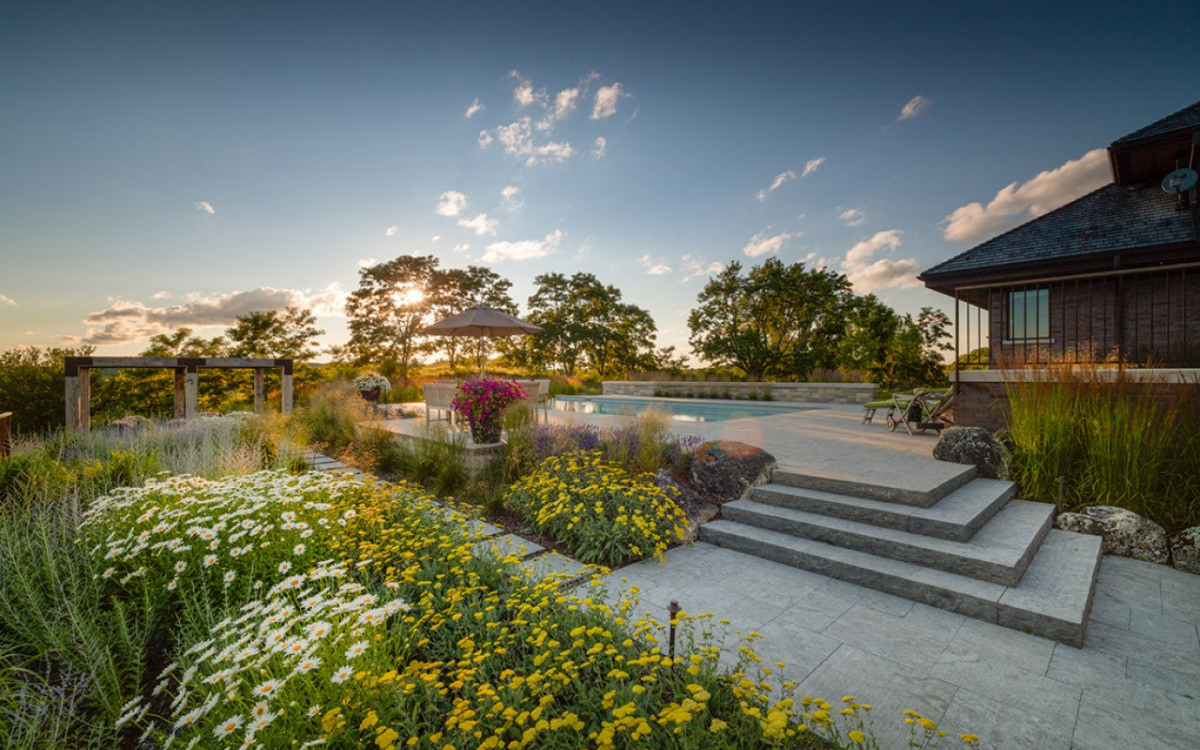
The Georgian Triangle is known for its rugged shoreline, natural wetlands, forests and rock barrens — so going to the nursery to choose flowers and plants for your garden can be a bit overwhelming.
There are so many options available, but not all of them are suited for life on the shores of the Georgian Bay.
We’ve been creating landscapes for the Blue Mountains, Collingwood and southern Georgian Bay area for over 35 years — and during that time we’ve discovered which plants serve to beautify your garden while preserving the unique ecology of our region.
These are our favourites and some of our most used plants in our landscape designs.
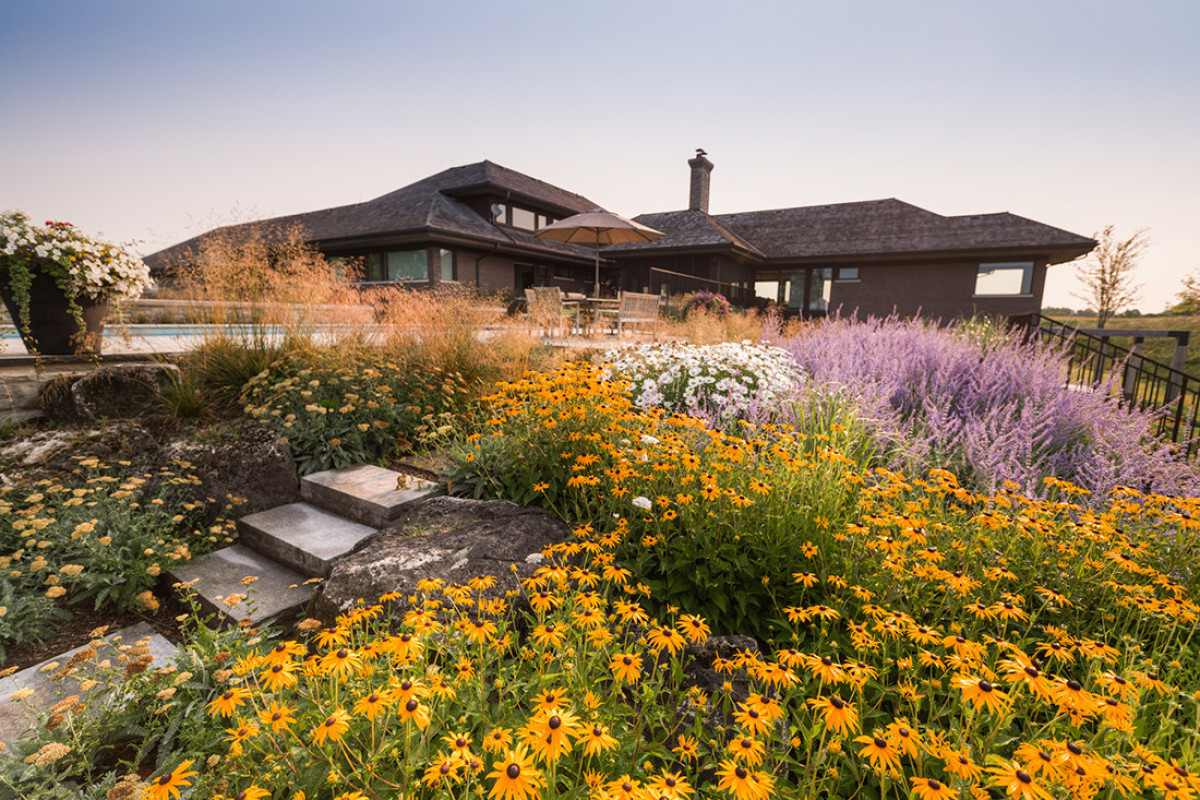
1. Native Plants
It’s important to include native species in your garden design because in addition to being beautiful, they are hardy, non-invasive and low-maintenance.
Native plants also provide food and shelter for wildlife, and are especially vital in supporting pollinators like birds, bees and butterflies. Without pollinators the world’s food supply (and your grocery cart) would look very different.
These are the native plants that would be at home in any northern garden:
Serviceberry (Amelanchier Canadensis) — Serviceberry (also known as Saskatoonberry or Juneberry) is popular in landscapes because of its early, white spring flowers and its striking orange fall foliage. They come in both tree and shrub forms and are extremely hardy — tolerating shade, drought and all types of soil conditions. As an added bonus, their large purple berries are also quite delicious!
Lady Fern (Athyrium Felix Femina)— This native beauty is known for its vigor and elegance. Its large rosettes of lacy, light-green fronds can reach heights from 2–5 feet and are a lovely addition to shady and naturalized garden designs. It’s fast-growing, pest and disease free.
Red Osier Dogwood (Cornus Sericea)— This deer-resistant species of dogwood is a four-season, ornamental shrub. It produces dense, flat-topped clusters of creamy-white flowers in the spring, followed by small white berries in the summer. Their fall foliage has hints of rose or gold and the vibrant red branches provide a welcome pop of colour in the winter.
Tufted Hair Grass (Deshampsia Cespitosa)— This elegant, ornamental grass grows in mound-shaped clumps and is ideal for shady and partially sunny locations. It’s an easy-to-grow perennial that produces feathery flowers of brown, green or gold from June to September — and it provides food and shelter for small birds and animals.
Purple Coneflower (Echinacea Pupurea) — Coneflowers are hardy, drought-tolerant and long-blooming — making them a favourite in many North American gardens. Their daisy-like blooms are rich in nectar, making them popular with bees and butterflies and hummingbirds.
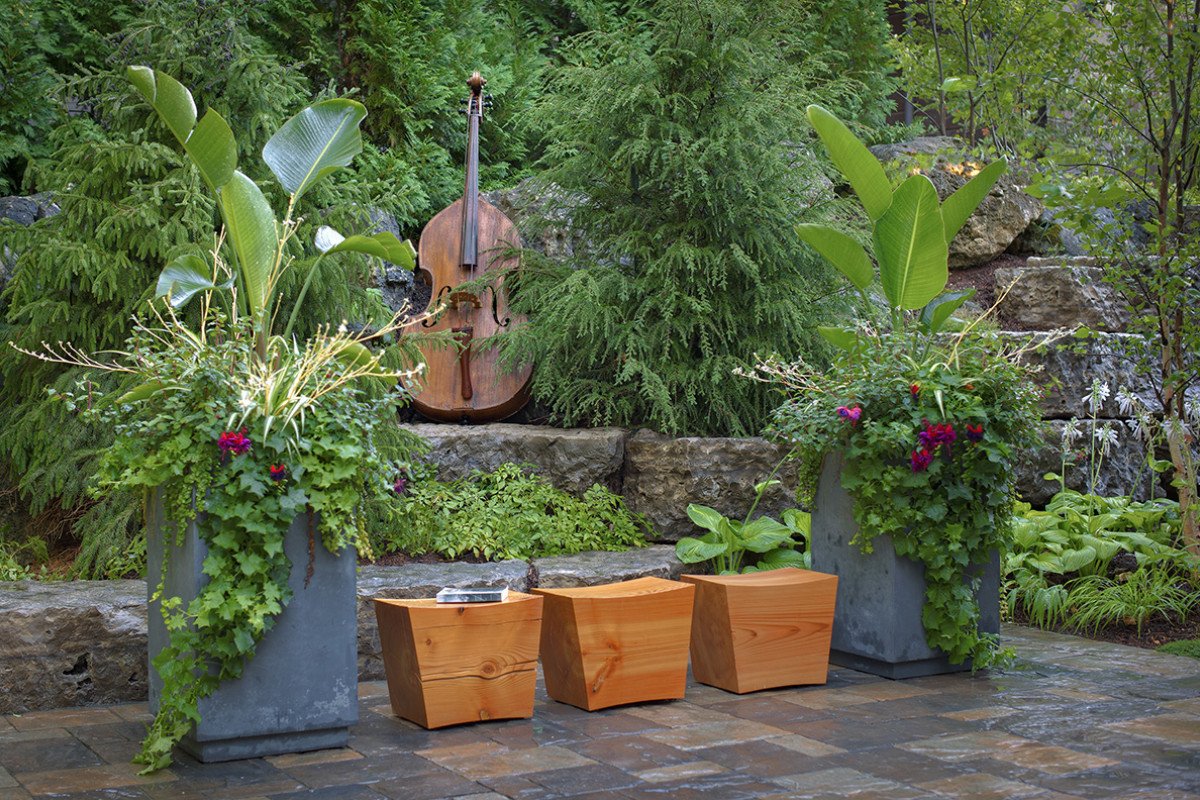
2. Perennials
When chosen correctly, perennials will continue to add beauty to your garden for many years — requiring little more than routine feeding and watering in the summer and mulching for winter protection.
Hosta ‘Moonbeam’ — A member of the lily family, Hostas offer an endless variety of easy-to-grow mounds of handsome foliage. The Moonbeam grows about two feet tall and has heart-shaped, bluish leaves with striking gold margins. They grow anywhere, making them perfect groundcovers under shady trees.
Dwarf Goatsbeard (Aruncus Aethusifolius) — This dainty perennial is happiest in a moist and shady environment, making it ideal for rock gardens or the front of a shaded border. It has creamy white flowers that bloom from late spring to mid-summer and elegant, feathery leaves that stay green all season.
Shasta Daisy ‘Becky’ (Leucanthemum x Superbum) — This cultiva of the hybrid shasta daisy sports long-lasting showy blooms that are 3 to 4 inches in diameter. These sun-lovers are easy to care for and aren’t picky about their soil conditions, making them perfect for the Georgian Bay area.
Oriental Fountain Grass ' Karley Rose' (Pennisetum Orientale) — Showy plumes of pink seed heads adorn this fine-texture fountain grass, making it a beautiful and elegant accent to any northern garden. This drought- tolerant, easy to grow perennial grass has a shapely form with graceful, arching stems.
Russian Sage (Perovskia AtriplicifoliaI) — A member of the mint family, this drought-tolerant perennial graces the garden with a haze of purple flowers from midsummer to fall frost. It’s tolerant of average or clay soils and when placed in full sun will produce lots of flowers on sturdy, silver-white stems.
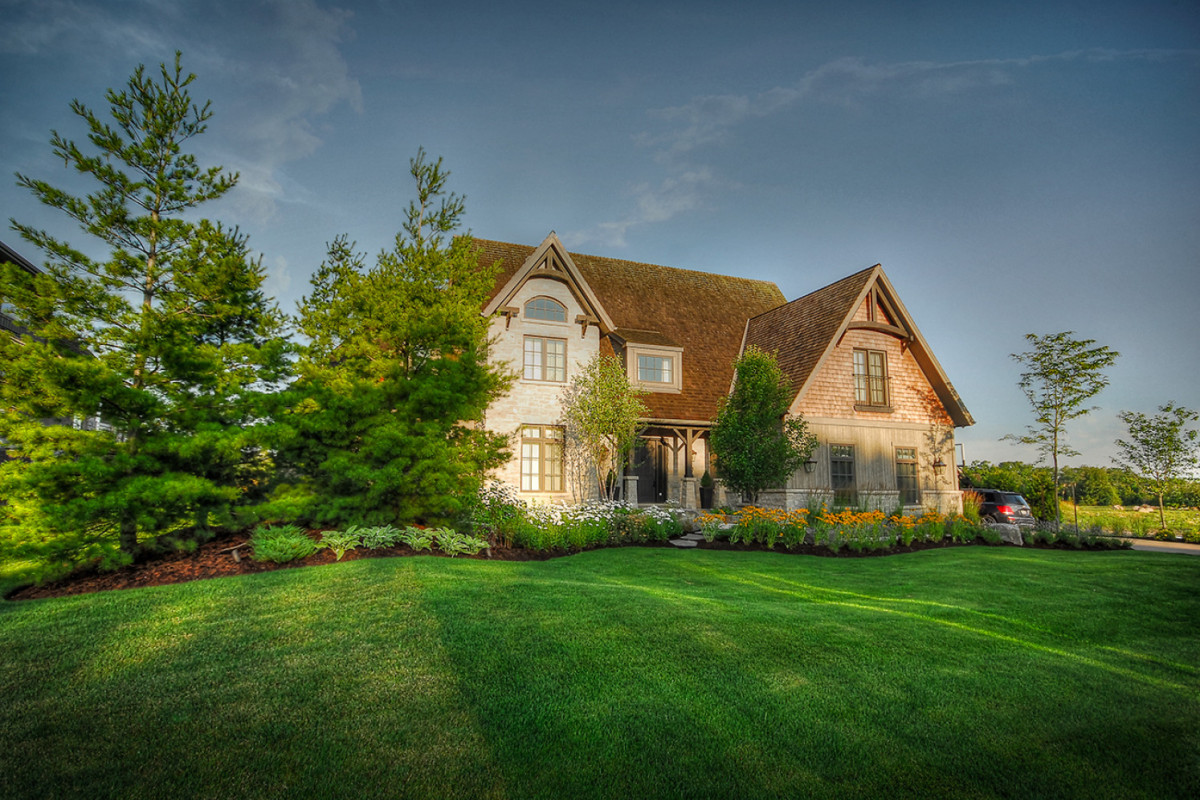
3. Trees
Pagoda Dogwood (Cornus Alterifolia) — This stunning little tree makes an excellent specimen plant for a woodland garden that gets lots of morning sun. Growing 15- 25 feet high, it produces small, creamy, fragrant blooms in late spring. The flowers (which are layered like pagodas) attract butterflies and the dense foliage provides nesting for birds — and the purple berries a tasty treat.
River Birch (Betula Nigra) — The river birch has beautiful, exfoliating bark that peels back to reveal a salmon-red interior. This —and the fact that it’s a highly adaptable species that tolerates poor soil conditions — makes it popular in landscape design. River birches can reach heights of 40–70 feet and have a lifespan of 30–40 years.
White Fir (Abies Concolour) — This hardy North American native evergreen boasts attractive blue-green needles (that smell like lemons when crushed) and produces large, purple-brown cones. It’s attractive, quick-growing and very hardy — tolerating a variety of conditions, including heat, drought and cold. This makes it a perfect addition to your landscape.
Whether you’re looking to plant a new garden yourself (or want to include some proven winners to an existing design) it’s important to consider which types of plants are best for your area.
Use this post for inspiration or take a look at some of our featured projects — and if you’d like to consult with one of our landscape professionals, we’re only a phone call or email away.
